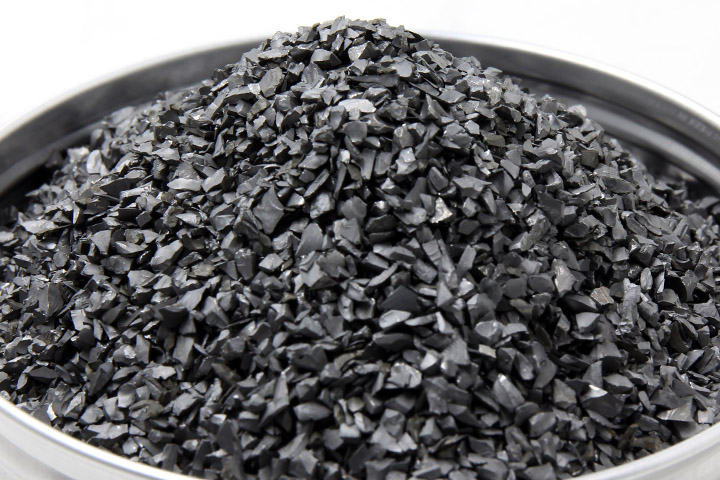

Cemented carbides for different purposes use WC (tungsten carbide) with different grain sizes. Cemented carbide cutting tools: For example, fine-cutting alloys such as foot cutter blades and V-CUT knives use ultra-fine, sub-fine, and fine-grained WC; rough-machining alloys use medium-grain WC; gravity cutting and heavy-duty cutting alloys use medium and coarse Granular WC is used as raw material; mining tools: rock hardness is high, impact load is large, coarse particle WC is used, rock impact is small, and medium particle WC is used as raw material; wear-resistant parts: when the wear resistance, compression resistance and surface finish are emphasized When using ultra-fine, sub-fine, fine, and medium-grain WC as raw materials, impact-resistant tools use medium and coarse-grain WC as raw materials.
The theoretical carbon content of C is 6.128% (atomic 50%). When the carbon content of WC is greater than the theoretical carbon content, free carbon (WC+C) appears in the WC. The existence of free carbon causes the surrounding WC grains to grow during sintering, resulting in uneven grains of cemented carbide. Tungsten carbide generally requires high combined carbon (≥6.07%), free carbon (≤0.05%), and total carbon is determined by the production process and scope of use of cemented carbide.
Under normal circumstances, the total carbon of WC used for vacuum sintering in paraffin wax process is mainly determined by the oxygen content in the compact before sintering. Containing one part of oxygen, 0.75 parts of carbon should be added, that is, WC total carbon=6.13%+oxygen content%×0.75 (assuming a neutral atmosphere in the sintering furnace, in fact, most vacuum furnaces currently have a carburizing atmosphere, and the total WC carbon used is less than Calculated).
At present, the total carbon content of WC in my country is roughly divided into three types: the total carbon of WC for vacuum sintering in paraffin process is about 6.18±0.03% (free carbon will increase). The total carbon content of WC for hydrogen sintering in paraffin process is 6.13±0.03%. Total carbon of WC for hydrogen sintering in rubber process=5.90±0.03%. The above processes are sometimes cross-processed, so the determination of WC total carbon should be based on specific conditions.
The total carbon of WC used in alloys with different application ranges, different Co (cobalt) content and different grain size can be adjusted slightly. Low-cobalt alloys can choose tungsten carbide with higher total carbon, and high-cobalt alloys can choose tungsten carbide with lower total carbon. In short, the specific requirements of cemented carbide have different requirements on the particle size of tungsten carbide.

Hot information

